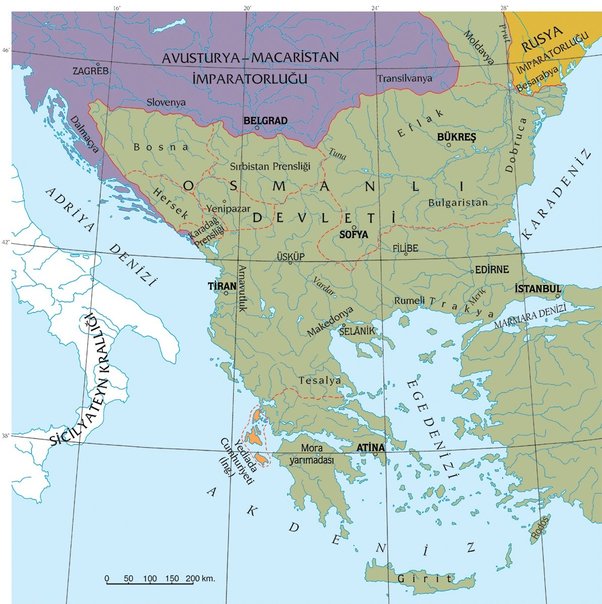Balkan Business News Correspondent – 15.06.2011
Train transit times between Ljubljana Slovenia and Istanbul Turkey can be reduced by half – a staggering 25 hours – if much-needed reforms in the rail sector are made, according to the new World Bank report, Railway Reform in South East Europe and Turkey: On the Right Track?, released in Brussels. “A test run of the Bosphorus Europe Express train in 2009 showed that a container train from Ljubljana, Slovenia can reach Istanbul, Turkey in 35 hours, but in practice often takes over 60 hours,” said Carolina Monsalve, Transport Economist in the World Bank’s Europe and Central Asia region, and author of the report. “This is a dramatic time difference with enormous economic consequences. The greater the efficiency of the rail sector, the larger the range of markets in which the rail companies across the region can successfully compete.” The much-needed reforms not only reduce transit times and help state rail companies reap economic benefits from enhanced coordination, management, and organization, they will also bring railways in South East Europe and Turkey closer to standards required by the European Union (EU), and enable healthy competition of the rail sector in order to improve rail freight and passenger services. The new Railway Reform in South East Europe and Turkey: On the Right Track? report revisits the railways of the region five years after the 2005 benchmark study, Railway Reform in the Western Balkans, to assess the progress made by the state rail in institutional reform, operating and financial performance, and integration. The report looks at the state of the railways in ten countries: Albania, Bosnia and Herzegovina, Croatia, Kosovo, Montenegro, Former Yugoslav Republic (FYR) of Macedonia, and Serbia, together with Bulgaria, Romania, and Turkey. The railways of South East Europe and Turkey experienced significant declines in traffic volumes in 2009. This reflected the impact of the international financial crisis unleashed in the last quarter of 2008 and its contractionary impact on the economies of the region and elsewhere. Lower traffic volumes translated in most cases into a serious deterioration of the financial performance of the state-owned railways. This brought home the costs of failing to implement essential reforms to improve the operational and financial performance of the sector when the economy was strong. The report stresses that there are three main reasons for prioritizing changes in the railway sector. Firstly, to ensure compliance with the requirements of relevant European Union (EU) directives. Secondly, countries can begin to reap the envisaged benefits of adopting this institutional framework. Finally, when competition is introduced, to enhance the ability of state rail incumbents to compete with new entrants without requiring increased levels of support from the state. With the exceptions of Bulgaria and Romania, which are already EU member states and the region’s lead reformers in the sector, all of the countries covered in the report aspire to join the EU. For candidate countries — such as Croatia, Turkey, or FYR Macedonia — there is particular urgency in complying with EU directives. For potential candidate countries, like Serbia and Albania, there is more time. However, precisely because those countries are further behind, the need to start accelerating the reform process now becomes even more compelling. In addition to improving their chances of being accepted into the EU, there are many intrinsic economic benefits for these countries to gain by meeting the institutional framework set by the EU. The main objectives behind the rail reforms introduced in Europe in the 1990s were to improve competition; create more and better integrated international freight rail services; improve the efficient use of infrastructure capacity; facilitate the creation of a single European rail space; and increase the share of rail compared to other transport modes. These objectives are as relevant today, if not more so, to the countries covered in this report as they are to the EU member states themselves. With the current corporate governance structure and existing operational performance, state rail incumbents will find it increasingly challenging to compete with new players when rail markets are opened and competition introduced. From a public policy perspective, a gradual set of reforms aimed at turning around the financial results of the state railways is less costly socially and politically, than dramatic layoffs at a time of acute crisis. In addition to implementing the required legislation, state rail companies need to change their cultures in order to become more business-oriented. They need to focus on meeting customer needs, and providing efficient, cost-effective services. In addition to providing efficient rail services to passengers, rail freight services are critical in the production, trade, and distribution of materials. Competitive transport services, in all transport modes, are a critical element in a country’s economic competitiveness. While rail reform has been largely moving on the right track, the report stresses that the pace of reforms needs to be stepped up. ”The main objective of this report is to serve as wake-up call of the urgent need for stepping up the reform process,” said Monsalve. “Those countries that aspire to be members of the EU need to understand that moving quickly on these reforms will greatly improve their chances of receiving a positive opinion from the EU regarding rail transport regulations, as well as boost their growth.” Monsalve emphasized that “Scarce public resources need to be used efficiently and effectively to finance the necessary upgrades in rail infrastructure and essential passenger services, not to prop up inefficient state railways weighed by excessive employee numbers and outdated management practices. The ultimate aim of the reforms is to improve railway services.” Source; WOrld Bank


Leave a Reply